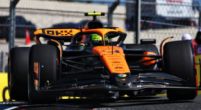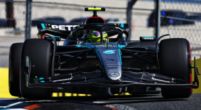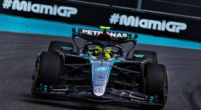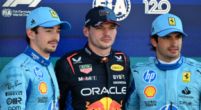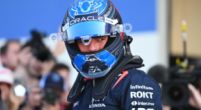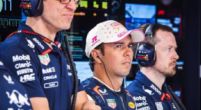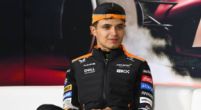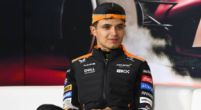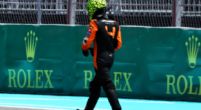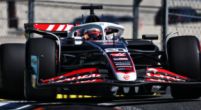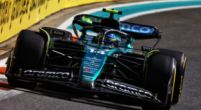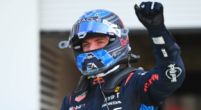Tech
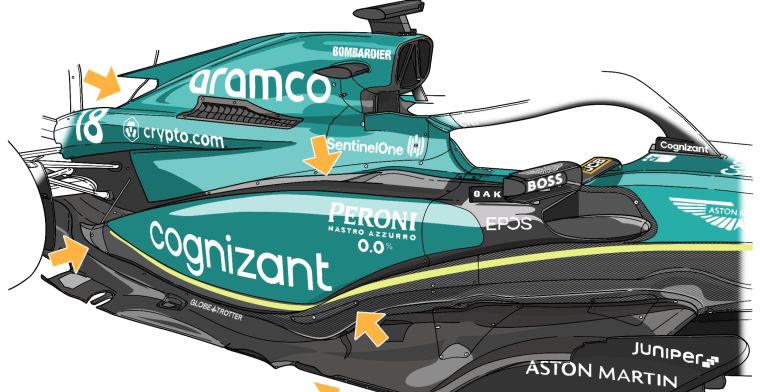
Technical Analysis | Aston Martin fired warning shots with these reversals
Aston Martin made a huge step forward at the beginning of the 2023 season, conostantly fighting for podiums in the first half of the championship, estabilishing themselves as the 2nd top team behind Red Bull until the Austrian Grand Prix. Despite these good performances, the Silverstone-based team showed a non-linear trend durig last season, with a lot of ups and downs and an evident drop in performance from Monza onwards. Could they come back at the front in 2024?
Dream start, but bad development
Starting with Aston Martin, the Silverstone team made a huge step forward during the first few races, as the technical team led by Dan Fallows managed to build a car that particularly suited Alonso’s driving style. The AMR23 presented many innovative solutions, some clearly inspired by Red Bull. The sidepods showed a cooling inlet placed rather high, with the clear objective of creating a vast undercut, useful for increasing the airflow directed towards the floor edge and rear of the car.
The engineers clearly took inspiration from the Alpine A522 when designing the sidepods by creating a deep "waterside" in the inner part, a useful excavation to bring flow towards the rear of the car. Even from a suspension point of view, while maintaining the same patterns as in 2022, steps forward had been made: the upper triangle was significantly raised, increasing the anti-dive present between the front and rear arms of the upper triangle. In addition to guaranteeing a mechanical advantage, this choice was made with an aerodynamic purpose, as they aimed to free up as much space as possible in the lower part of the chassis to increase the flow of air directed towards the Venturi channels.
All these solutions made the car extremely quick from testing onwards. The AMR23 proved to be very strong in all slow-speed sections, especially in traction, whilst still losing time to Red Bull in high-speed corners (where downforce was required) and in straight lines, where the excessive drag of the green car came out. Despite these weaknesses, the British team and Alonso were the only (other) team capable of finishing on the podium regularly in the first races, clearly becoming the first team behind Red Bull.
To take a step forward and solve these problems, Aston Martin brought a big upgrade package in Montreal for the Canadian Grand Prix. The new parts aimed to increase AMR23's aerodynamic efficiency to close the gap to their rivals. The main changes concerned the sidepod and engine cover area and the “waterside” inside the sidepods. The water slide-stile gulley had been narrowed and started a little far back, with a more profound decline into the rear section of the bodywork.
The lower part of the sidepod has been widened to create a useful channel to feed the back of the car. For this reason, the attachment of the initial part of the floor to the chassis had also been slightly revised, with a bridging panel, useful for modifying the flow pattern both in the upper part of the floor and inside the Venturi channels. A final change concerned the rear exit of the engine cover, with a letter-box outlet running at the final part of the engine cover spine, with a new shark fin appearing above. This solution allows the hot flow (outgoing from the engine) to be discharged and directed towards the beam wing.


Aston Martin hoped that all these parts would have helped them improve the AMR23's aero-efficiency without losing their incredible speed and traction from the slow corners. Despite Alonso being able to get P2 in the Canadian Grand Prix, the effects of these changes were visible only a few Grand Prixs later: this major package caused the car to lose its optimal balance, also losing the strength points shown in the previous races. Consequently, the AMR23 was way behind Red Bull on the top speed list and lost ground in all slow-speed sections, proving to have a complicated situation in their hands that was difficult to improve. Consequently, the team only scored 21 points between Silverstone, Hungary and Spa (to make a comparison, they scored 23 in Bahrain at the first race!), with a clear performance loss to their direct rivals, Ferrari and Mercedes.
The technical team decided to make the most out of all practice sessions, trying to understand where they went wrong in the development process. After understanding where the problem was lying, they brought a new floor in Austin: the new solution included a different floor edge and a new shape of the lower area of the sidepod. The drawing below shows that the new floor edge was very different from the previous version. The new one shows a "knife," which is the length of the entire floor edge. Furthermore, this solution slightly rises in the initial part, where three vortex generators are located, to best push away the turbulence from the front wheels.
Finally, the modification relating to the sidepod aimd to increase the area of the "wall" to create a second channel that brings air towards the diffuser and the beam wing, increasing the overall downforce.

After this new floor was shown, the Silverstone team did a lot of comparisons during the last few races of the year, with Alonso and Stroll having different floors (one with the new spec and the other driver with the previous one) on their car, to gather as much data as possible, not only for 2023 but especially for the 2024 car. However, all these tests seemed to bring back something good, as the AMR23 came back to be competitive both in Brazil, where Alonso got P3 in the race and in Las Vegas, where Stroll managed to finish 5th.
Alpine with a less powerful engine
For what concerns Alpine, they tackled one main problem during last season: a lack of engine power compared to their competitors. This problem, however, hadn’t been easy to solve, mainly due to the FIA limitations related to the Power Unit development through the year (Constructors can only work on reliability until 2026). Despite this penalizing aspect, the A522 was a car able to generate a good amount of downforce, but was still penalized a lot by not having a good thrust from the engine (less thrust means more drag, regardless of the aerodynamic philosophy of their car). Moreover, their engine was not only less powerful, but also less reliable, as they were forced to retire from many races during the 2023 season.
However, the car behaved quite well on high downforce tracks, like Monaco and Zandvoort, where Ocon and Galsy respectively were able to get a podium, but they still suffered on tracks like Baku, Monza and Abu Dhabi. To reduce part of the drag, they decided to bring a completely new cooling inlet and mirror support in Singapore: as for the cooling inlet, they had completely changed the inlet shape, following the Red Bull and Aston Martin philosophy. Compared to the previous square shape, it now had a lower lip placed higher and forward, useful not only for "capturing" the air to cool the Power Unit, but also for creating a backfill channel in the lower part of the sidepod itself. The upper lip, however, was further back and was connected to the lower one by a curved profile.
The mirror also had two metal vortex generators in the upper part, to be able to direct the air towards the internal part of the sidepods.

These changes seemed to have helped the French team in the following races, as they were able to score almost 40 points from Qatar to Abu Dhabi, still finishing 160 points behind Aston (the gap is more than the points Alpine was able to score in 2023).
What to expect in 2024?
It’s clear that the team need to make a step forward if they want to come back at the top in 2024: in fact, Aston Martin had a very good car at the beginning of the year, but they lost their competitiveness due to a wrong development path. For this reason, their main focus on the 2024 car must be to have a good starting car with a stable aero-mechanical platform to develop it correctly and catch up on their opponents. Moreover, they should focus on increasing their efficiency without penalising downforce and slow speed performance.





